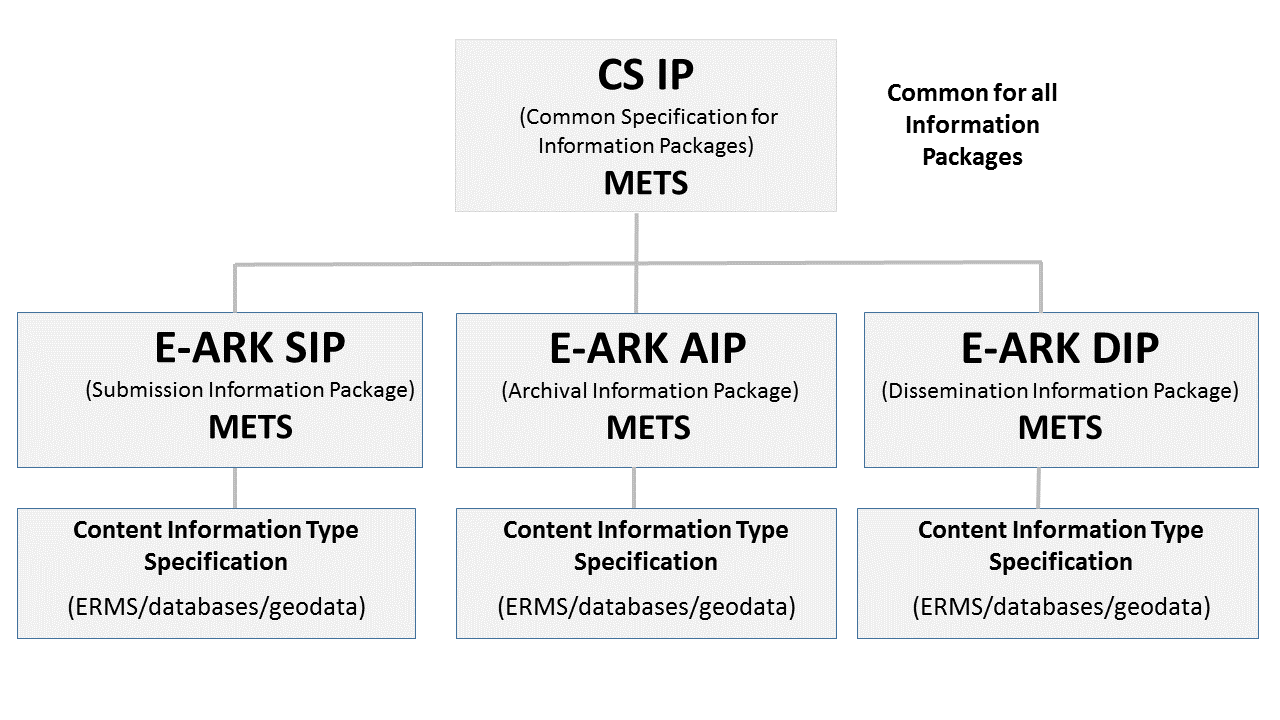The eArchiving reference model setting
When we consider the European Commission’s new eArchiving Building Block and that its evident that at its core are specifications based upon formats expressed in XML. The entireBuildingBlockrevolves around transfers of information where the final transfer is to the archives, but nothing prevents these transfers occurring earlier in the information lifecycle. The e-archive is built upon the Reference Model for an Open Archival Information System (OAIS Reference Model)[13]and its use of information packages, the Submission Information Package (SIP), the Archival Information Package (AIP) and the Dissemination Information Package (DIP). There are more parts described in the reference model but the core part used in the specifications are the information packages.

The OAIS reference model.
The different packages in the OAIS reference model are within the eArchiving Building Block described or get their inventory or manifest stated with the Metadata Encoding and Transmission Standard (METS)[14] which uses XML as the format for creating the readable text. (For the AIP it might be a format internal to the archival system you are using but that is another paper.) This way both machines and humans can understand the package (we do have some extra principles which aid with what constitutes a package). METS itself is a rather open standard with only one mandatory element being a structural description of the package. The standards also demand the creation of a profile for the exact use case describing the use of the standard and its elements and attributes. The profile for the eArchiving Building Block requires besides the METS XML-schema an extension XML-schema and validation rules in Schematron. The difficulties occur when the common user doesnot know how to validate the XML in combination with Schematron due to poor or no knowledge of either XML or Schematron and not having access to a person with the knowledge. We must not forget that Schematron adds its owncomplexities when it is combined with a non-relaxNG schema. A complexity that can be overwhelming when you don’t know XML at all or just a basic understanding. This gives that numerousguidance documents need to be created ranging from how to write XML to how to use a specification. And all this since you cannot count on the person implementing the specification and its validation to have the appropriate background knowledge.

The eArchiving building block and the different specifications building up a Information Package. In the image the three different types of packages is seen.